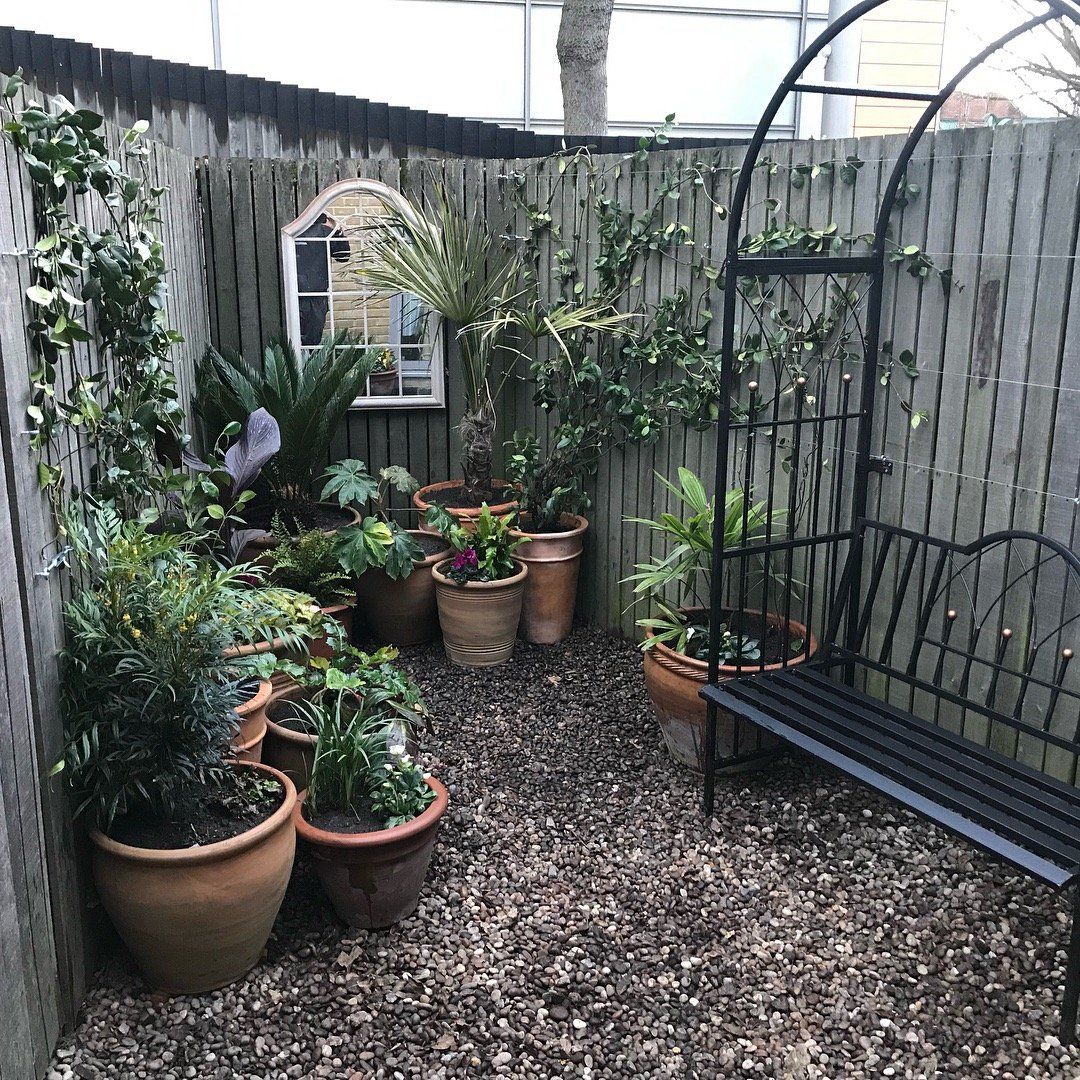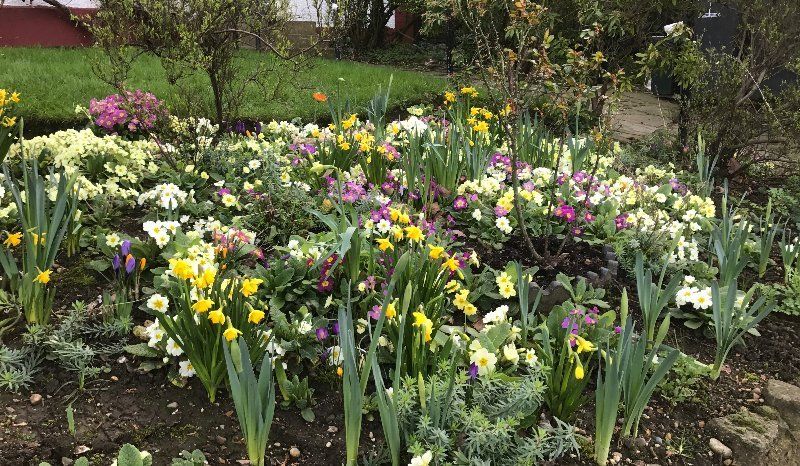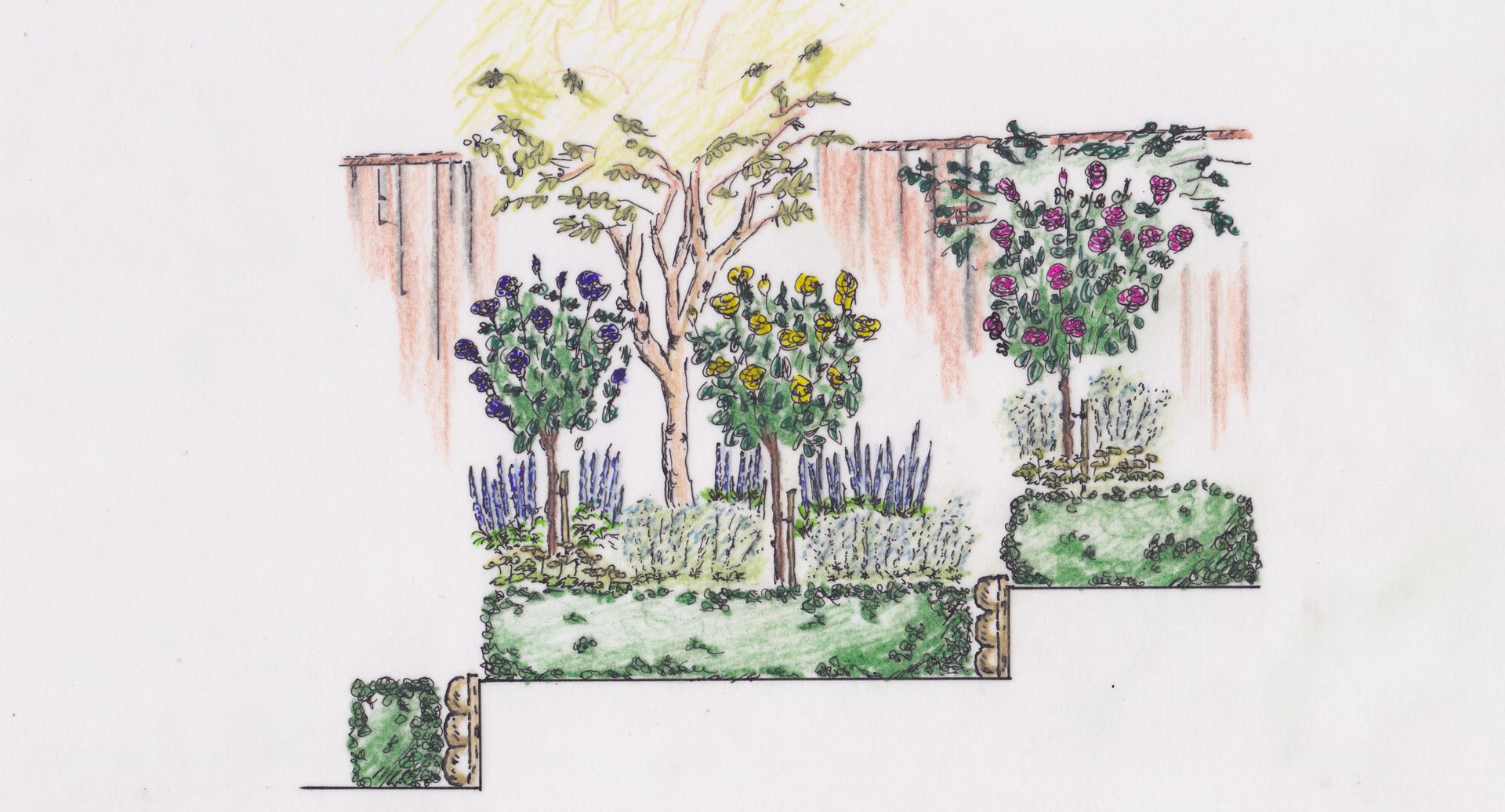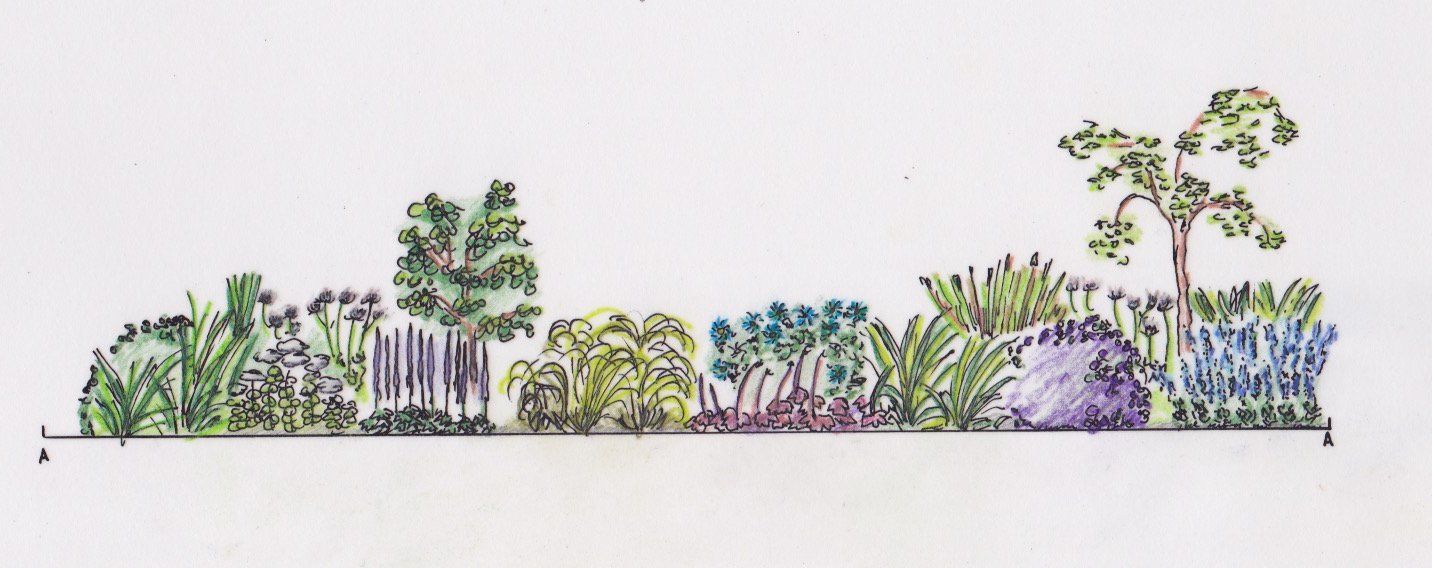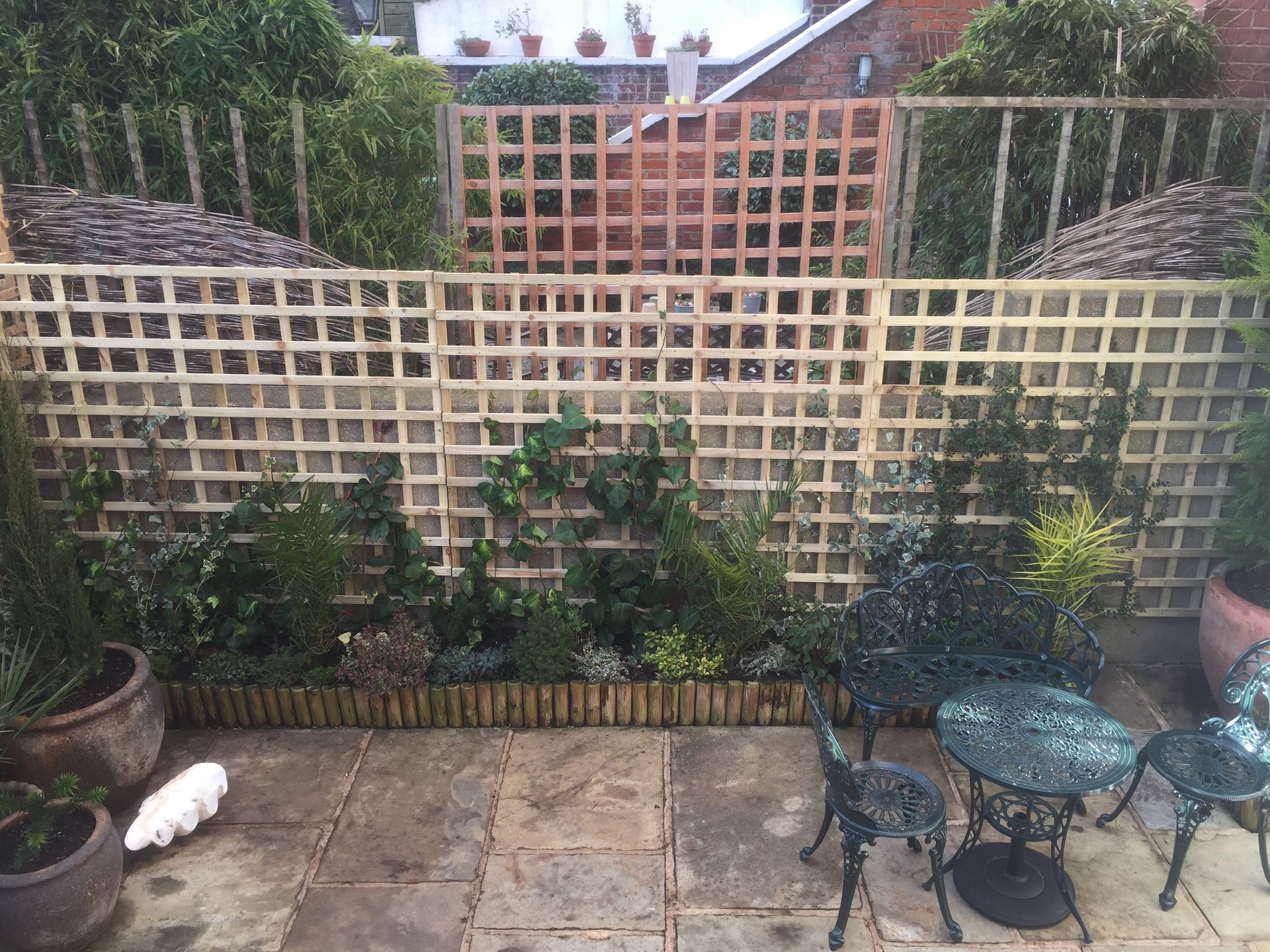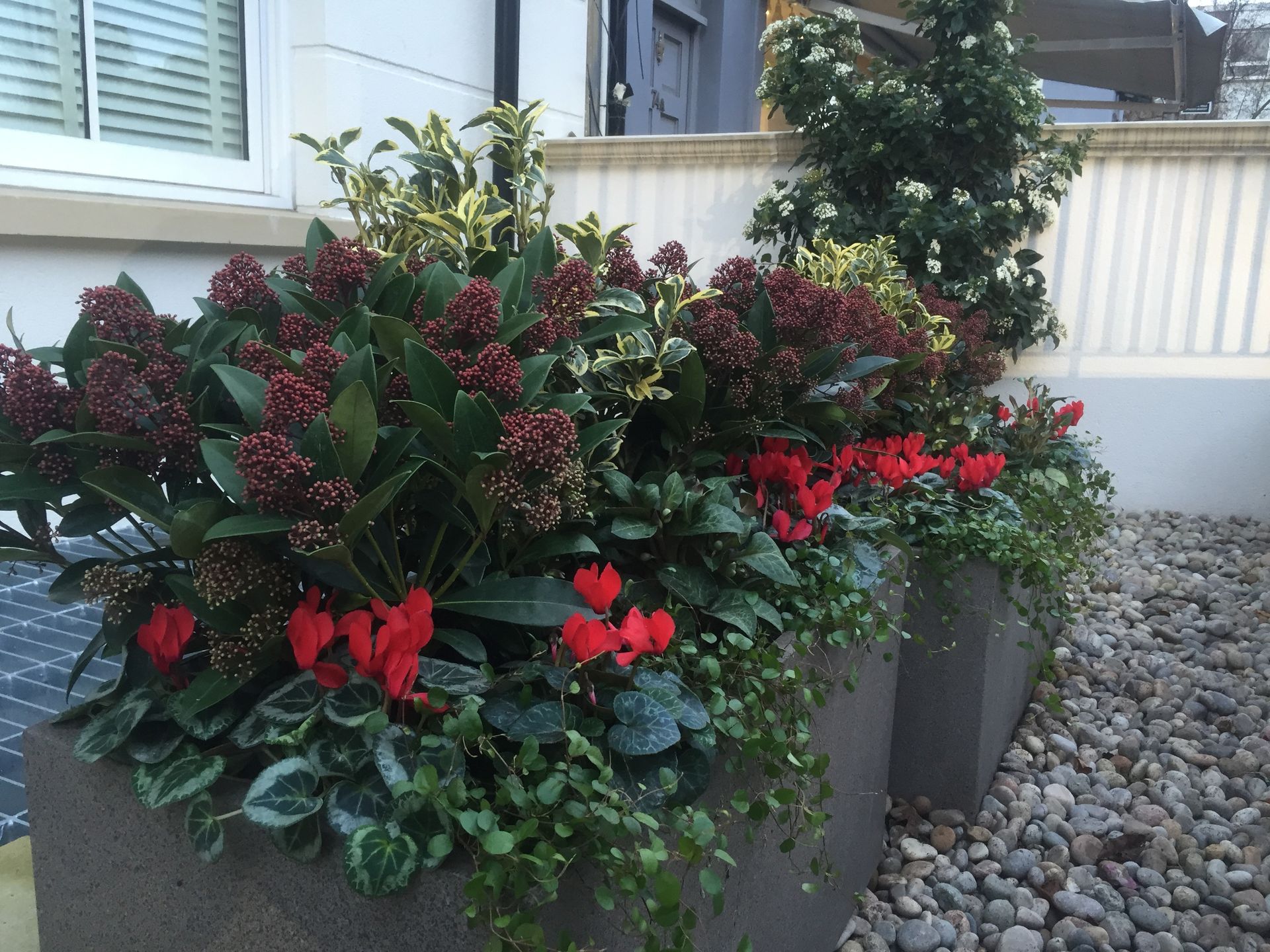Clearing & Planting in Ally Pally
- By James Eltringham
- •
- 29 Jan, 2018
- •
Replanting a south facing border after a complete clear out of an overgrown area from June 2017.
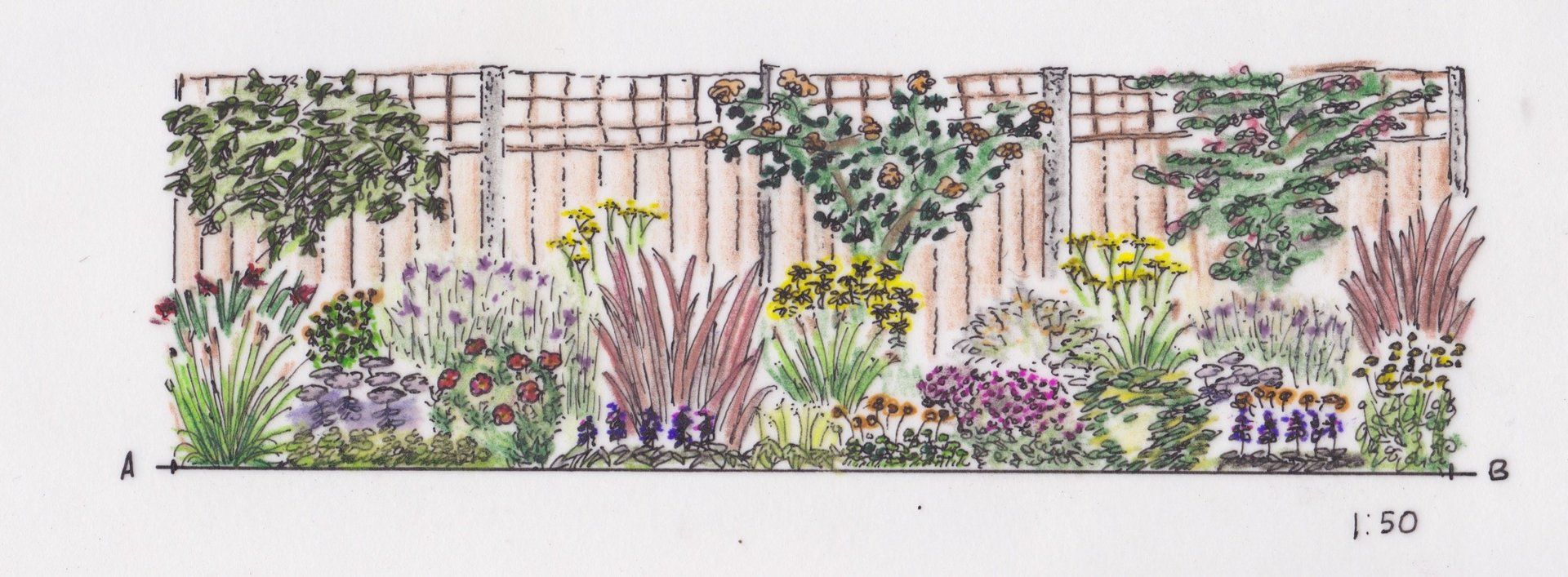

It was decided that the border would be smaller than the plan, which meant that we had to take out some of the plants from the plan. There was a mix of colouring throughout the scheme with vibrant yellows, oranges and pinks The border is in full sun and the ground is very clay based, meaning that the ground is wet in the winter and quite dry soil in the summer. The plant selection, hopefully, are those that are conducive to those environmental factors.
The main structural element to the planting plan is the Phormium
and the Pittiosporum, they give all year round evergreen foliage, and
both recur through the planting. Other
evergreen plants are the Pennisetum
grass and Cistus.
Much of the planting is herbaceous, meaning they die back in the winter, but remerge in the spring/summer. These plants really give you the floriferous summer show. The spring starts with the Geum, Geranium and the Gaura and these last through the summer. The Crocosmia and Rudbeckia come later in the summer. Plants such as the Phlomis and the Sedum still have great architectural qualities throughout the winter as they die back.
A climbing Rosa at the centre should over time cover the central section of the fence with wire support and join with the a Loniceria and Trachelospermum climbers.
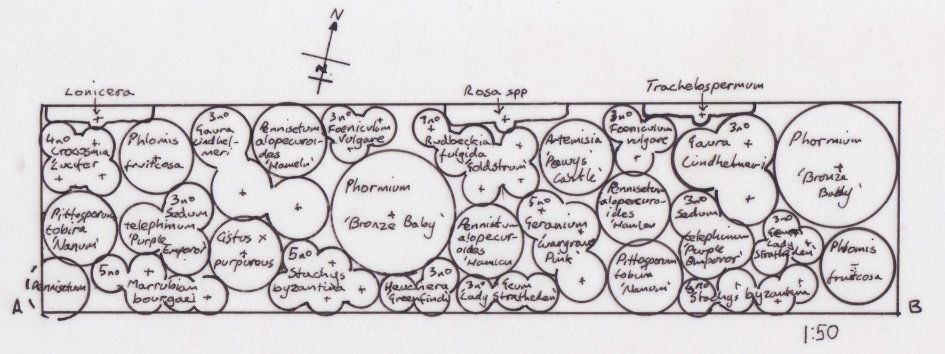
As you can see from the photo below, I think we were successful. The Rudbeckia hadn't come through, but when it did, along with the rose made a real impact. Also over time, we where able to reestablish the lawn, so we now have a nice clean demarcation between the border and lawn.
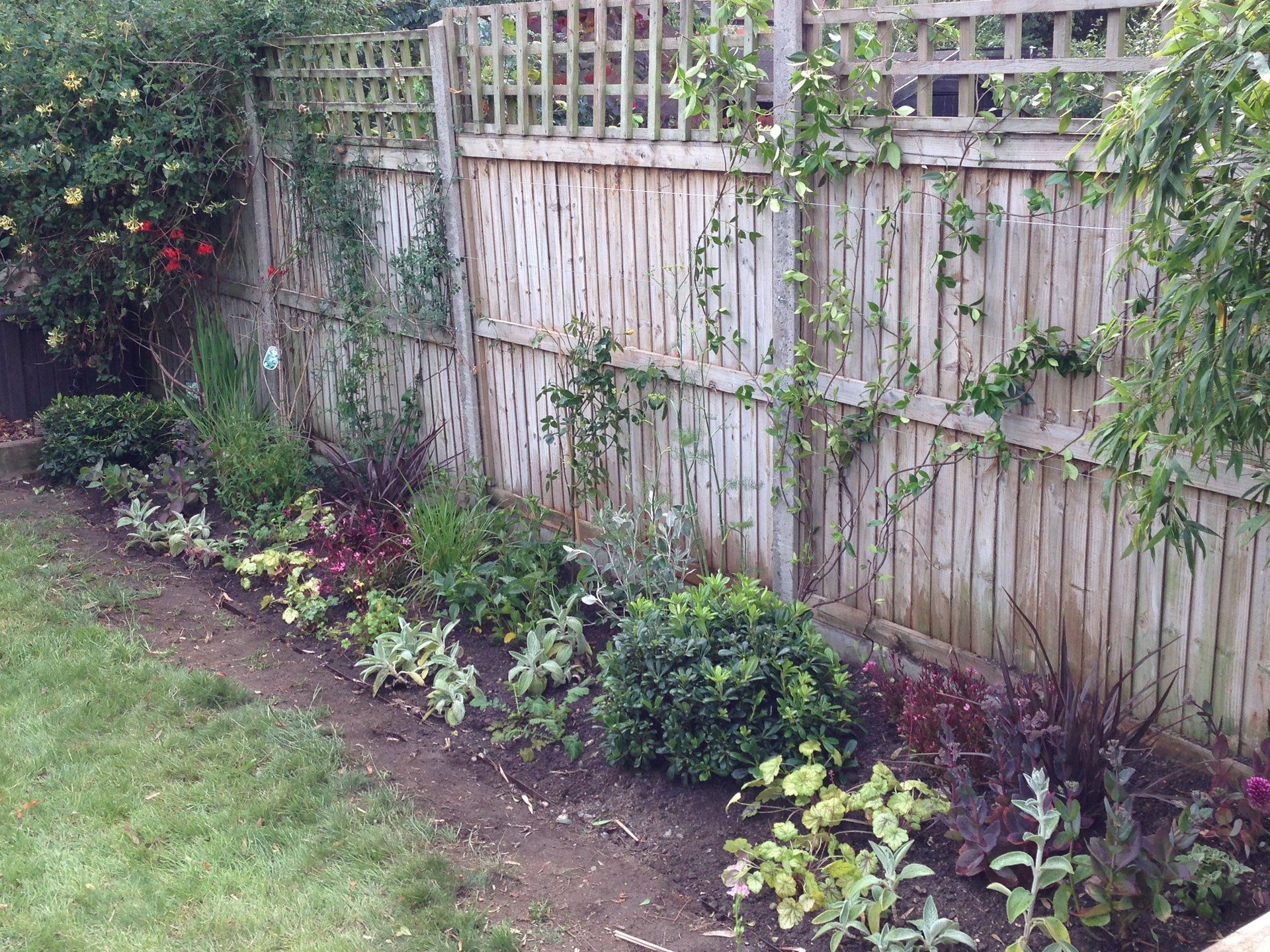
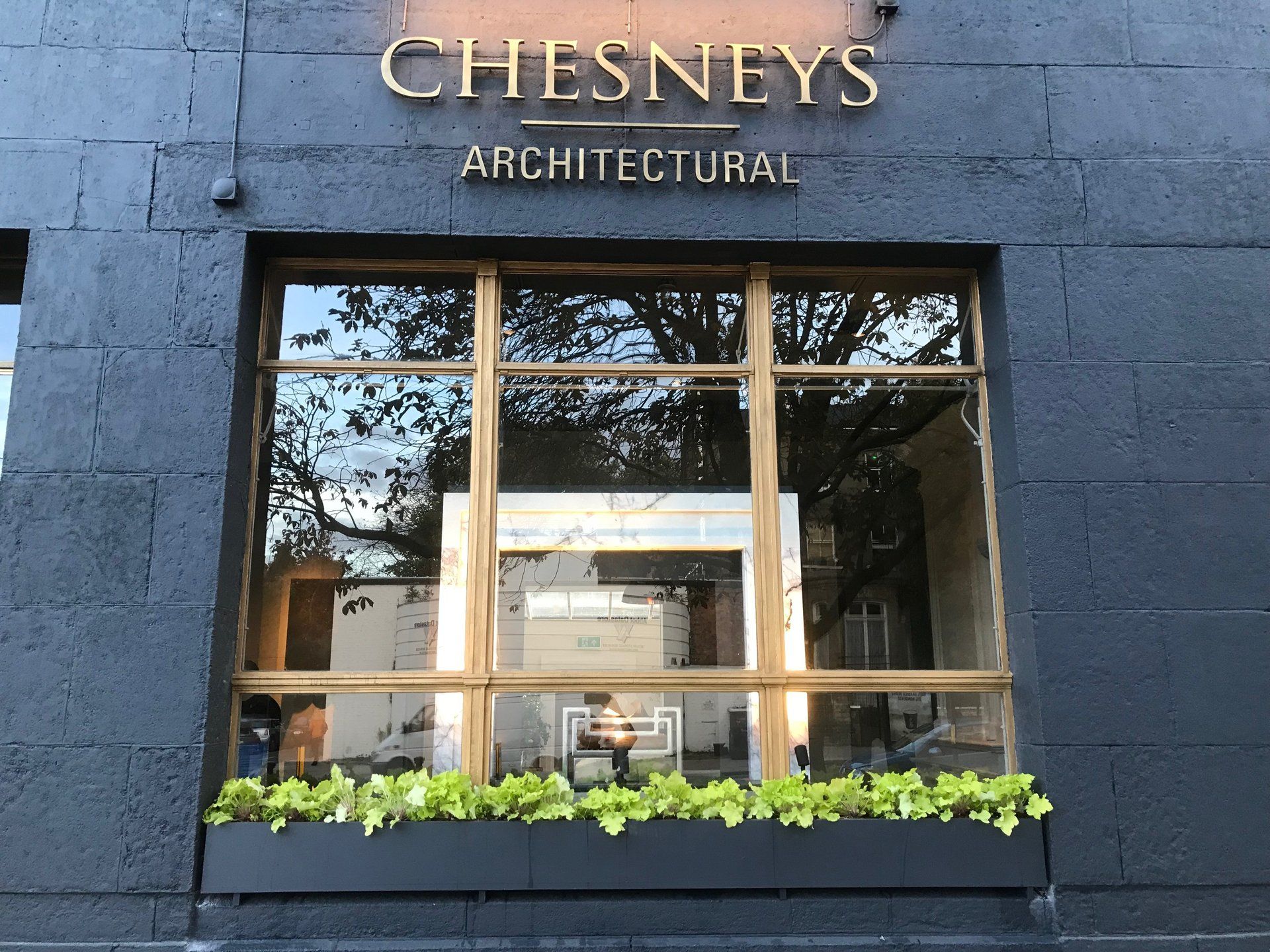
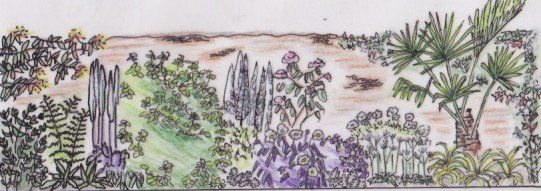
The idea behind this design is to produce a white garden that reflects the evening sun, offers evergreen interest and morning fragrance. There is also an exotic theme with the Trachycarpus, Fatsia and Choysia , with differing leaf shape and size to offer contrast.
The aspect of the garden has led to a differing approach to the areas. The North facing bed has a number of shade tolerate plants, with many offering evergreen foliage for all year round interest. The rest of the beds receive sun for long periods of the day. These areas have a high number of plants that produce a strong fragrance and an iridescent colour. There is a mix of evergreen and deciduous planting. Plants such as the Cosmos are annuals but do self-seed. These areas can give the option of changing the design from year-to year.
The planting form is repeated with the rounded Pittosporum , as well as the vertical Actaea, Digitalis and Aconitum . A number of the plants, particularly the climbers, Tracyelospurnum and Lonicera , offer a rich burgundy or copper colour which will act as a foil to the white flowers, making them sparkle in the evening sun.
There is also a bulb overlay (not represented here). The bulb design is essential to promote an all year round interest. Areas taken in the summer by herbaceous perennials and annuals will look bare in the winter-spring without a bulb plan. Galanthus and Colchicum give interest in the darkest winter days, then the planting leads to the Narcissus and Tulipa in the spring. Alliums give a statuesque presence through the summer.
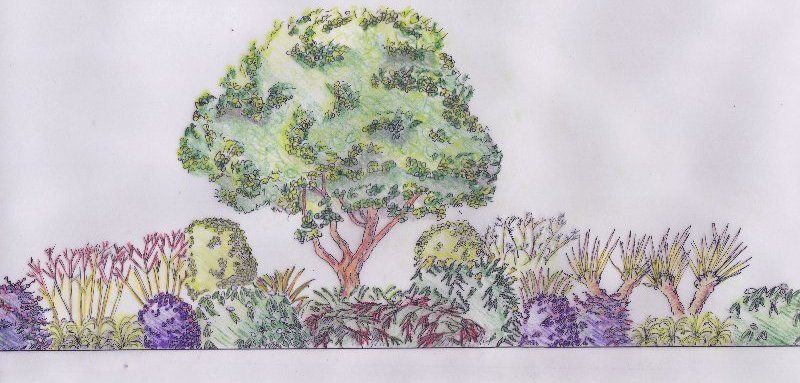
The planting centres on the medium sized, evergreen, Arbutus . Under planted with white Erica , the fabulous coloured bark is shown in it's full glory. Many of the plants are inspired by the Winter garden at the Cambridge Botanic Gardens. There are contrasting textures between the Pittiosporum , the Mahonia and the Viburnum . There are the harmonizing forms of the rounded habit/colour of many of the shrubs, including the Loropetalum and the Pittiosporum . The plants selected are low maintenance, with the majority evergreen. The harmonizing forms of the Cornus and the Salix will need to be pruned once a year but the effect is well worth the effort for their fantastically coloured stems. These plants, along with the Lonicera , will allow the winter sunshine to radiate through the border, ensuring the area remains open and bright in the darkest of winter days.

